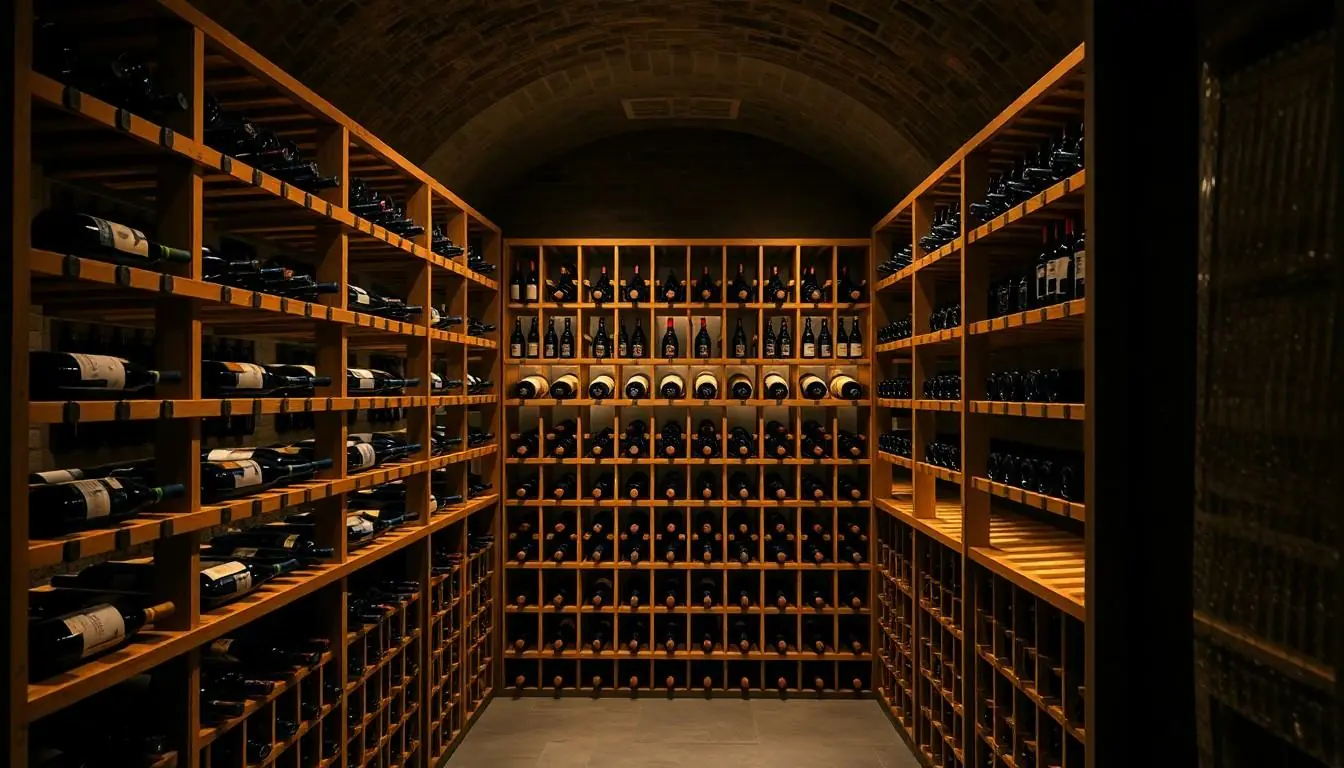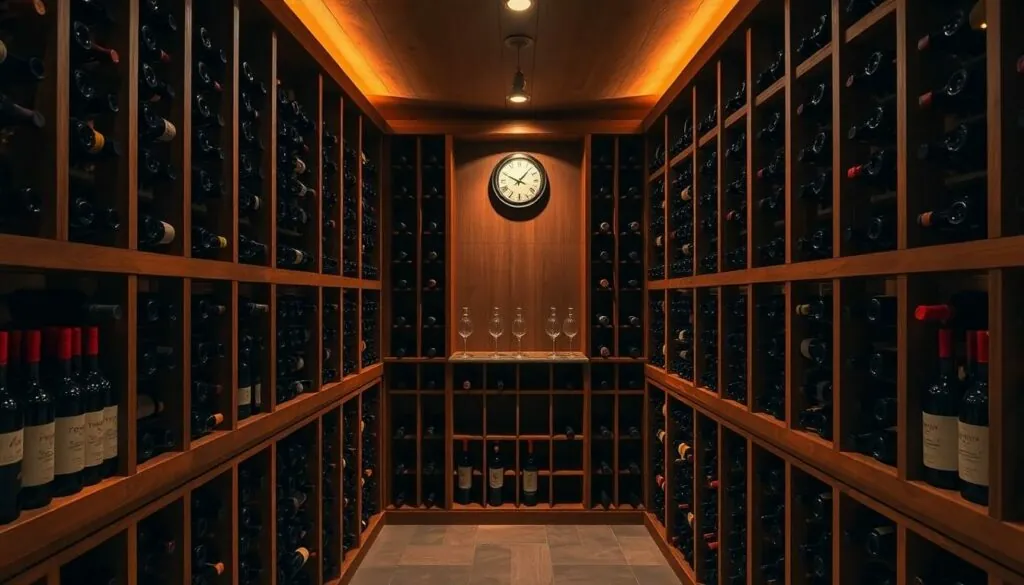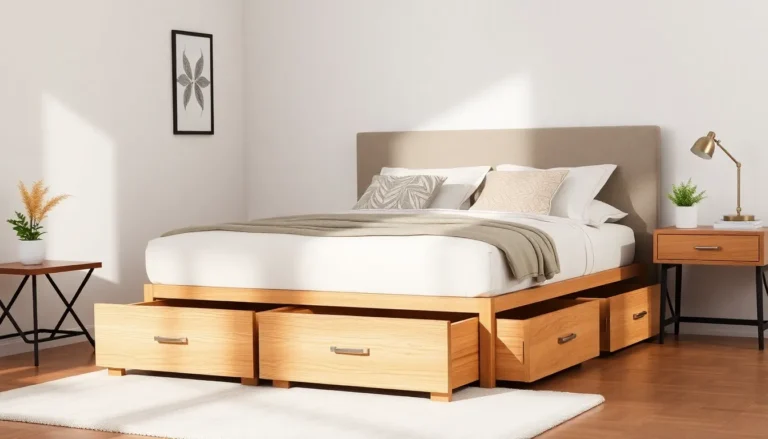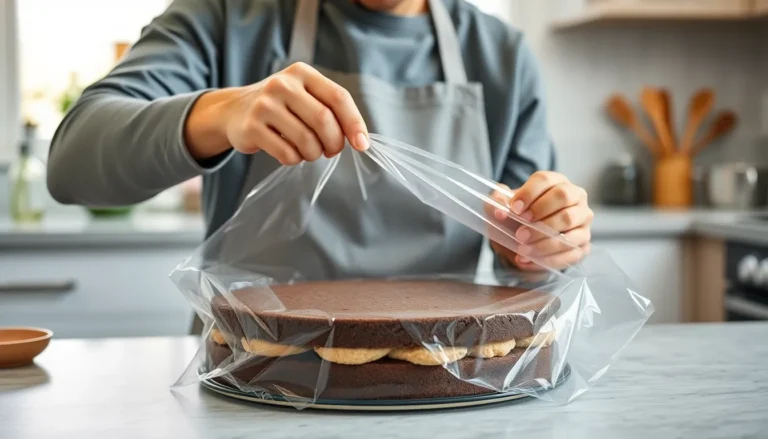Table of Contents
ToggleWine lovers know the joy of uncorking a perfectly aged bottle, but storing that liquid gold at home can feel like a game of Jenga. With so many factors to consider—temperature, humidity, and light—it’s easy to turn your wine collection into a sad, vinegary mess. But fear not! With the right home wine storage tips, anyone can transform their humble abode into a wine sanctuary that would make even Bacchus proud.
Overview Of Home Wine Storage
Home wine storage involves understanding key factors like temperature, humidity, and light. Maintaining a stable environment preserves the wine’s quality. Ideal temperatures range from 45°F to 65°F, with 55°F commonly considered optimal. Fluctuations in temperature can damage wine, so consistency is vital.
Humidity levels between 50% and 70% help prevent corks from drying or becoming moldy. Low humidity can lead to evaporation, while excessive humidity may promote mold growth. It’s crucial to balance these elements in any storage solution.
Light exposure poses another significant threat to wine. UV rays can prematurely age wine, so keeping bottles in dark environments is essential. Choosing wine racks or cabinets that minimize light exposure protects the collection.
Consideration of storage location is another important aspect. Basements often provide the ideal conditions for wine storage due to cooler temperatures and natural darkness. When basements aren’t available, keep wine in a cool, dark place, away from heat sources.
Investing in a dedicated wine refrigerator can also be beneficial. Wine refrigerators maintain the appropriate temperature and humidity levels while providing UV protection. They come in various sizes, accommodating both small collections and extensive inventories.
Maintaining an organized wine storage system enhances accessibility and enjoyment. Labeling bottles and grouping them by varietal or region can simplify the selection process. Regularly checking for any signs of spoilage ensures the collection remains in peak condition.
Importance Of Proper Wine Storage

Proper wine storage significantly influences the enjoyment of any collection. Maintaining the right conditions ensures wines remain flavorful and aromatic.
Impact On Wine Quality
Temperature instability negatively affects wine flavors and aromas. Research indicates that fluctuations beyond the ideal range of 45°F to 65°F quickly deteriorate wine quality. Cork-related issues, often arising from improper humidity levels, lead to oxidation. Light exposure, especially from UV rays, accelerates aging, causing wines to spoil. Choosing appropriate storage environments preserves nuances in aroma and flavor, ultimately enhancing the tasting experience.
Benefits Of Ideal Conditions
Ideal storage conditions yield numerous advantages. Maintaining stable temperatures ensures wines age gracefully, promoting balanced flavor development. Humidity control prevents cork drying, which protects against spoilage. Proper lighting contributes to the longevity of a wine collection by minimizing potential damage. An organized system enhances accessibility and ensures regular monitoring for spoilage. Altogether, these factors help elevate wine enjoyment, allowing enthusiasts to savor each bottle at its peak.
Types Of Home Wine Storage Solutions
Home wine storage solutions come in various forms, each catering to different needs and preferences.
Wine Cellars
Wine cellars provide optimal conditions for long-term wine storage. Typically located underground, they maintain stable temperatures and humidity levels. A well-designed cellar includes proper insulation and ventilation. These factors help protect wines from temperature fluctuations. Custom-built cellars may feature stone or brick walls to enhance cooling. Additionally, owners can control light exposure, ensuring wines remain protected from harmful UV rays.
Wine Refrigerators
Wine refrigerators offer convenience and controlled environments for short to medium-term storage. These appliances maintain ideal temperatures between 45°F and 65°F, with specific models catering to red or white wine preferences. With adjustable shelving, wine refrigerators accommodate various bottle sizes. Many models include dual zones, enabling users to store different wine types simultaneously. Standard features often consist of UV-resistant glass doors, ensuring light doesn’t compromise wine quality.
Wine Racks
Wine racks serve as an effective and stylish way to store bottles. Available in multiple materials, including wood, metal, and acrylic, these racks fit various spaces and décor styles. Stackable options maximize space efficiency in smaller areas. Racks also allow for proper horizontal storage, keeping corks moist. Organizing wines by varietal or region enhances accessibility and visual appeal. Many racks include integrated features such as temperature control or built-in lighting for an elegant presentation.
Factors To Consider When Choosing Storage
Selecting the right home storage for wine involves careful consideration of several essential elements. These factors significantly impact the wine’s quality and longevity.
Temperature Control
Temperature stability plays a crucial role in preserving wine. A consistent environment between 45°F and 65°F is ideal, with 55°F being optimal. Fluctuations can lead to undesirable changes, affecting flavors and aromas. Storing wine in places like basements, which tend to maintain these temperatures, enhances storage conditions. If a basement isn’t available, consider a wine refrigerator that allows precise temperature settings. Such appliances ensure protection against heat and maintain proper storage environments.
Humidity Levels
Maintaining correct humidity levels is vital for cork integrity. Optimal humidity sits between 50% and 70%. Higher levels can lead to mold growth, while lower levels may dry out the cork, resulting in oxidation. Wine racks and cellars should incorporate humidity control to avoid these issues. Monitoring humidity with a hygrometer helps maintain the right levels. Consider using a humidifier or a wine refrigerator with humidity control features to optimize storage conditions.
Light Exposure
Limiting light exposure is essential in preserving wine’s quality. Ultraviolet rays can cause premature aging, affecting the wine’s composition. Dark storage areas, like basements, naturally reduce light exposure. If utilizing a wine rack or refrigerator, opt for models with UV-resistant glass. Additionally, avoid bright light sources near storage areas to further protect bottles. Creating a dark environment helps ensure wines remain flavorful and aromatic for longer periods.
Creating the perfect home wine storage environment is essential for any wine enthusiast. By focusing on temperature, humidity, and light exposure, individuals can ensure their collections remain in optimal condition. Whether opting for a dedicated wine cellar, a refrigerator, or stylish racks, the right storage solution enhances accessibility and organization.
Taking the time to implement these strategies not only preserves the quality of the wines but also elevates the overall tasting experience. With a little effort and attention to detail, anyone can enjoy their collection at its best, savoring each bottle’s unique flavors and aromas.




